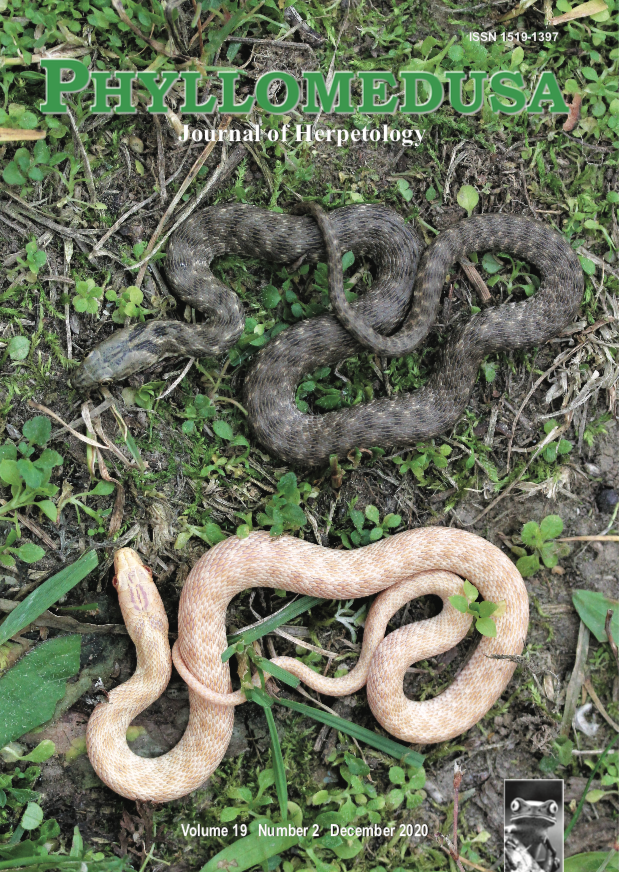Trophic ecology and morphology of Anolis bartschi (Squamata: Dactyloidae) in Viñales National Park, Cuba
DOI:
https://doi.org/10.11606/issn.2316-9079.v19i2p177-187Keywords:
conservation, diet, food niche, lizards, niche overlap, protected area, West IndiesAbstract
Trophic ecology and morphology of Anolis bartschi (Squamata: Dactyloidae) in Parque Nacional Viñales, Cuba. Little is known about the trophic ecology of most anoles of Cuba. Morphology is directly related to ecological functions in lizards, such as feeding strategies, interspecifc competition or energetic demands linked to reproduction. Anolis bartschi is a regionally endemic species, restricted to karstic hills of western Cuba. Here, we offer new insights into the trophic ecology of this species, and its relation to head morphology. We captured 131 adults; males were larger than females in size and head width. Most of them had prey in their stomachs. Males consumed more prey than females, but the latter consumed larger prey. Prey overlap within sexes was detected in the dry season, but trophic segregation occurred in the rainy season. Hymenoptera was the most frequently consumed prey in both sexes. In addition, females ate Blattodea and Coleoptera, and males consumed more Diptera. We suggest that this lizard prefers sedentary rather than mobile prey. According to our dataset and feld observations, A. bartschi is a bimodal forager lizard, but research on temporal (daily and annual) variation in diet is recommended for a proper forage classifcation of this lizard.
Downloads
Downloads
Published
Issue
Section
License
Copyright (c) 2020 ESALQ-USP

This work is licensed under a Creative Commons Attribution-NonCommercial-NoDerivatives 4.0 International License.
All material originally published in Phyllomedusa belongs to Escola Superior de Agricultura Luiz de Queiroz - Universidade de São Paulo. All contents are under a license of Creative Commons BY-NC-ND.


 Impact Factor (JCR): 0.400
Impact Factor (JCR): 0.400 CiteScore: 1.0
CiteScore: 1.0